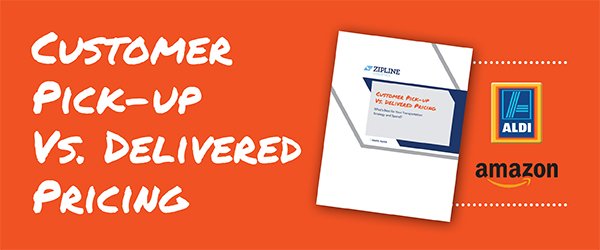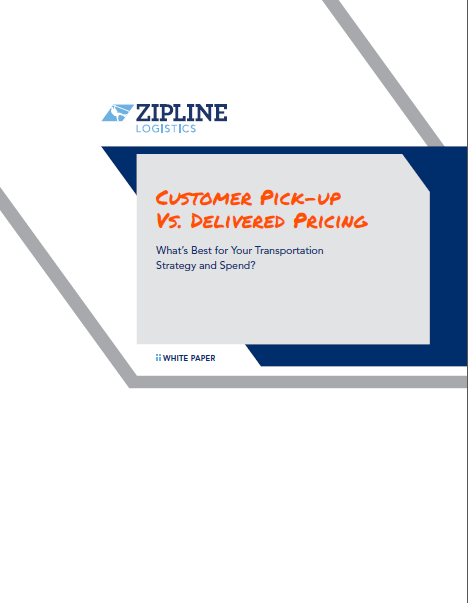
How a consumer product company gets its goods to buyers and on to retail shelves is an integral part of the cost equation. Decisions made around delivery can make the difference between costly transportation and healthy margins.
There are two popular scenarios for delivery:
- Retailers will pick up the product, using their own fleet or purchased transportation and provide Customer Pick-Up (CPU) Pricing
- The brand will handle their own transportation into the receiver/retailer and charge a slightly higher Delivered Price
Unfortunately, the optimal strategy isn’t always obvious.
Many CPG companies assume that letting retailers manage the process will be the best choice because it is seemingly less work and pricing is more predictable. This is often true and the optimal way to go.
However, when a brand manages their own transportation it can equate to:
- Immediate operational savings
- More control
- A sizable increase in product margin
How can you tell what strategy is best suited for your business?
Looking at Customer Pick-Up Pricing and Freight Cost Calculations
Evaluating CPU and Delivered pricing is an exercise that should be visited often and adjusted based on market and volume factors.
To start, manufacturers should calculate the price delta between CPU and Delivered.
By multiplying this price difference by both transportation costs and amount of product sold, shippers can see their opportunity cost.
If opportunity cost is positive, this means managing transportation, rather than handing over to retailers, will cost less for the brand to execute and lead to larger margins.
If opportunity cost is negative, CPU is likely the best choice, and cheaper for the brand overall.
Looking at Operational Impacts of CPU Pricing and Logistics
The above cost calculation doesn’t include outside variables – such as overall control, convenience, or consolidation – and can’t be relied upon as the sole factor in this strategic transportation decision.
Even when CPU is less expensive, giving control to retailers can indirectly impact a brand’s operations and production schedules. Retailers control appointment times and can send their vehicles whenever is most convenient and cost-efficient for them, not the brand manufacturer.
Additionally, initial CPU vs. Delivered pricing calculations don’t include the potential for consolidated orders. When a brand has more freight volume under their control, and customer or receiver locations that are close in proximity, consolidating orders can help dramatically reduce freight spend.
Download the free white paper to learn more about this important decision and how consumer brands can determine the best strategy for their transportation. This paper includes cost equations, real brand examples, and actionable insights.
Download: CPU vs. Delivered Pricing - What's Best for Your Transportation Strategy and Spend
Learn More
Interested in running a CPU vs. Delivered analysis? Zipline Logistics is experienced with helping both emerging and established brands navigate the decision of CPU vs. Delivered pricing.
